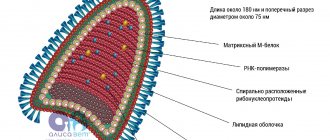Pours of juicy berries with thin skin and a sweet sugary aroma. We have known about the benefits of grapes since ancient times and, it would seem, do not even think about the possible harm of the fruit to our smaller brothers.
Each berry carries taste and benefits for human health. In theory, grapes are a great addition to a dog's main diet... but are they?
Is it possible to give grapes to a dog?
Many dog owners use grapes as a reward for good behavior. The format of the treat is convenient: each berry is “packed” in a peel. But do they think about the benefits of such a treat?
Positive reinforcement training is a great way to raise your best friend. By rewarding your pet with a toy or treat for good work, you motivate him to study harder to earn the reward. When caring for your four-legged friend, you must be sure that the treat will not harm your pet’s health.
Unfortunately, no matter how tasty and healthy a treat grapes or dried raisins are, they are contraindicated for dogs, as they can cause kidney failure.
Let's take a closer look
How to make a dog vomit
To induce vomiting in a dog, try sticking your finger down its throat or giving it a small amount of food if it hasn't eaten for at least two hours, experts say.
According to the AKC, if your dog has eaten grapes within the last two hours, you can also administer orally (pour into the mouth) one teaspoon of 3 percent hydrogen peroxide solution for every 6 pounds of body weight to induce vomiting (maximum dose is three tablespoons for dogs weighing 20 kg). Hydrogen peroxide irritates your dog's intestines. Typically, it induces vomiting within 10-15 minutes of administration. Vomiting can last up to 45 minutes, removing about 50 percent of what your dog has ingested.
To administer hydrogen peroxide to your dog orally, use a feeding syringe or turkey baster. Inject the solution into the back of the dog's mouth or tongue, or between the back teeth, and do not allow the animal to inhale the solution. If the dog does not vomit within 15 minutes of being given the hydrogen peroxide solution, a second dose can be given.
The AKC recommends monitoring your dog after attempting to induce vomiting and collecting all vomit so a veterinarian can examine it. Also monitor your dog for additional symptoms or adverse events or reactions, including diarrhea, increased lethargy, bloating, or vomiting lasting more than 45 minutes.
Can dogs eat seedless grapes? How much is it safe?
Grapes are often beneficial for humans, but toxic to pets. In addition, products of grape origin (grape seed oil), raisins should be strictly prohibited as toxic substances when it comes to your four-legged animals.
The toxic effect of consuming these berries may vary among representatives of the animal world. While some tolerate the toxic effect calmly, others show signs of illness.
The dependence of the severity of intoxication on the amount of product has not yet been established. There are cases of suppression of the immune system of a dog weighing 9 kg due to 5 sweet berries.
According to research, the lethal dose of raisins is contained in the range from 5 to 20 grams per kilogram of animal body weight! Just a few grams can cause damage to health. So don't think that just one or two berries won't do any harm.
-But what about the owners who feed their animals sweet berries without consequences? - you ask.
Due to the lack of awareness about the dangers of grapes for dogs, we can say that they were simply lucky - the animal was not poisoned. If you simply suspect that your pet may have eaten a few berries, seek advice from your veterinarian.
“My puppy eats and everything is fine...”
On forums you can see many messages about a dog eating grapes and everything is fine. Entire theories have been put forward about the fact that you can give grapes “from the bush” - they are your own, domestic and safe, many dogs, according to the assurances of their owners, have been eating grapes for several years and everything is fine.
In general, there are many myths about the safety of grapes . Their creation was greatly facilitated by the fact that the nutritional composition of different grape varieties is very different and some of them may indeed be harmless to animals, but which ones have not yet been established.
It is important to remember two things: first, each animal's body is unique . Each has its own characteristics, its own diseases and threshold for assimilating toxic substances.
Secondly, the dog's health depends entirely on you . According to statistics, in most cases this berry turns out to be poisonous, so is it worth the risk?
Fresh and dried, grown on a farm or even with your own hands, bought in a store, seedless grapes (you remember that it’s not about the seeds), white and dark - all can equally turn out to be a lethal treat for a pet , leading to kidney failure .
Also, frequent consumption of grapes, even if everything went well the first time, can have a cumulative negative effect . In this case, the consequences of poisoning will appear in a couple of months. All of the above also applies to raisins: these are the same grapes, and the concentration of the substance in them is increased.
IMPORTANT: According to veterinarians, there are no substances in grapes that are beneficial for dogs. If an animal asks for it, this indicates exclusively a love for sweets. But choosing a safe analogue of sweets will not be difficult.
Grapes and raisins for dogs: benefit or harm?
Until now, veterinarians and scientists have not been able to identify the toxin contained in ripe berries that causes poisoning in dogs. According to historical data, in 1989, veterinarians identified one pattern: a connection was found between the consumption of grapes and raisins and the resulting kidney failure. Theoretically, the influence of substances contained in grapes on the canine body remains unconfirmed: heavy metals, pesticides, mycotoxins (fungal toxin) and herbicides.
List of dangerous foods for dogs: Grapes Raisins Sweets with raisins Chocolate Onions Avocado
This is amazing, because for humans these berries are a storehouse of useful substances, including:
Resveratrols are a plant antioxidant responsible for longevity.
Antioxidants - participate in the restoration of damaged cells and accelerate regeneration.
Anti-Inflammatory – Grapes contain natural anti-inflammatory agents that reduce joint or skin inflammation and also reduce soreness.
Fiber - improves bowel function
Vitamins - for example, vitamin K is responsible for blood clotting and calcium absorption.
Benefits for humans
Grapes are a vine bearing fruit; There are both wild and cultivated plant species. For people, grapes are not only safe, they are even beneficial. They are eaten fresh, dried (raisins) and cooked. Wine is produced from the berries, and oil is produced from the seeds, which is considered extremely valuable in cosmetology. There is also a balsamic production.
Grapes contain:
- vitamins – PP, C, B6;
- minerals – copper, phosphorus, calcium, iron, manganese, zinc, potassium;
- Berries also contain amino acids - lysine, methionine, arginine, histidine.
Grapes are used as a means of combating excess weight - in this case, the berries should be consumed an hour after meals. is also useful ; it is considered one of the best because it has general strengthening properties.
Dark varieties help with diseases of the respiratory system, and grapes in general will help with heart diseases - normalize heart contractions, equalize blood pressure, reduce shortness of breath and cleanse the blood. External use is also possible: grape juice is an excellent treatment for eczema.
Raisins , dried grapes of certain varieties, are no less useful for people. It improves brain activity and is successfully used for anemia and heart diseases.
There is nothing seditious about grapes: they are healthy, juicy and very tasty berries. But for dogs everything is completely different , and even if your pet loves sweets and feasts on your table, you need to hide the grapes from him.
The dog ate grapes: possible consequences
The consequences of use can appear both in a short period of time and after a long period. Intoxication usually occurs within 24 hours.
Usually within 6 hours the most common symptoms appear: abdominal pain, vomiting, diarrhea. All of the above is accompanied by lethargy and loss of appetite.
However, in addition to vomiting, which helps rid the body of poisons, the effect of consuming grapes can be much more serious.
Substances in sweet berries can cause kidney failure. Signs of the disease may appear within 24 hours after eating the fruit.
Symptoms of kidney failure in dogs include excessive thirst, excessive urination and incontinence. The described symptoms may include vomiting and diarrhea. The worst sign is drinking a lot without urinating. This indicates reduced kidney function.
If proper and intensive treatment is not provided, then after a few days or weeks the animal can expect death.
Signs of poisoning
It is difficult to determine intoxication immediately; at least several hours must pass for the first symptoms of poisoning to appear. And every minute can count. Therefore, the animal’s reaction should be observed if there is even the slightest suspicion that it has eaten sweet berries. A slight change in the pet’s condition or behavior is a reason to immediately go to the veterinary clinic.
Grape intoxication is manifested by the following symptoms:
- vomiting, in the vomit there are remains of undigested berries;
- frequent profuse diarrhea;
- lack of salivation or, conversely, increased salivation;
- refusal of food and water;
- lethargy, apathy;
- decrease in body temperature.
The walls of the peritoneum become toned, this can be determined by palpation. The abdomen is painful; when touched, the dog begins to whine. Toxic shock develops up to two days; if the pet is not helped as soon as possible, it will die.
Important!
A lethal dose for a dog weighing up to 20 kg is 8-10 berries; poisoning can be caused by just 3-4 grapes eaten. For a small breed dog this dose is much less.
Death is a consequence of the development of acute renal failure. Poisoning is caused by decay products of internal organs and stagnation of urine. The kidneys cannot cope with the increased load, which leads to irreversible damage to the organs. If you seek veterinary help within 12-18 hours of poisoning, the survival rate is 100%. But hospital treatment will be required.
Treatment. How to help a dog with grape poisoning
First of all, you need to take your pet to the clinic to diagnose the condition of the body. You will need to have your blood and urine tested. As a result of the diagnosis, the doctor will prescribe the appropriate treatment.
In case of acute poisoning, it is necessary to carry out a procedure for cleansing the stomach: you need to remove the contents to stop further absorption of the toxin. Special drugs that provoke vomiting, activated charcoal, and gastric intubation will help cleanse the stomach.
What to do to save your pet
At the first signs of poisoning, contact a veterinarian. Before his arrival or arrival at the clinic, you need to provide the dog with plenty of fluids. If time is not lost, then the chances of successful recovery are high. A competent specialist will probe the abdominal cavity and do a blood test. A catheter will appear on the dog's paw for intravenous administration of saline solutions. In addition, medications will be used to stimulate the dog's urine production. Therapy can then be given to maintain normal kidney and liver function, if necessary.
Come up with alternative safe treats
To avoid possible health problems, you should remember a simple rule - grapes should not be given to dogs. Prompt veterinary care will save the life and health of your pet, but such situations are best avoided. There are many other healthy and safe berries you can treat your pet with, such as strawberries.
What vegetables and fruits can be given to dogs?
Leave handfuls of grapes for your lunch, and choose an alternative option for your pet.
Dogs need vitamins and minerals every day too! They are carnivores: their diet should include meat, vegetables and fruits. Your pet should get plenty of fresh greens and fruits, but first make sure they are safe for your friend.
Foods approved for dogs : Apples, Apricots (boneless), Asparagus, Bananas, Broccoli, Blueberries, Carrots, Green beans, Peas, Pumpkin, Raspberries, Spinach, Watermelon
Questions and answers
Our readers often ask questions that they want answered. Therefore, we present the most common of them.
Can dogs eat seedless grapes?
Regardless of the presence or absence of a seed in a grape, it should not be given to a dog. In addition, it is prohibited to feed your pet any baked goods containing raisins.
Can dogs eat green grapes?
Only an owner who does not love his devoted friend will feed his pet green unripe grapes. Not only is the fruit unripe and sour, but your pet can get poisoned from a small amount.
Can dogs eat grape leaves?
If your pet eats grape leaves, it means he has problems with the gastrointestinal tract. There is no point in stopping him from doing this. Dogs can eat leaves. The rough, hard leaves cleanse the stomach, causing the animal to vomit.
How to avoid poisoning?
The dog loves sweets, which is why it is attracted to delicious juicy grapes. Her desire can be satisfied with other, safer fruits. For example, a piece of pear with less sucrose, green apples, kiwi, banana, watermelon or cantaloupe. You can also give your dog raspberries, strawberries, gooseberries or currants.
My dog eats grapes without harming his health!
Such statements are quite common on animal lovers forums. However, you should not listen to their opinion. Each animal, like a person, is individual and has its own immunity. What may be a minimal amount for other dogs may be the maximum toxic dosage for your dog.
In conclusion, I would like to repeat: giving grapes to dogs is strictly prohibited. What is healthy and tasty for humans can cause serious harm to an animal’s body. A small amount of berries provoke disruption of the gastrointestinal tract and cause kidney failure. Take care of your pets.
Healthy treats for dogs: recipes for treats for pets
You want to keep your dog healthy, but how can you give up reward training? The trap of all training is the intake of calories, which we do not take into account when preparing a diet.
One way to avoid extra calories during training is to feed a specific amount of food, no more, no less. That is, you must measure the treat in grams. Or take a look at the following options:
- Asparagus: Simply chop up some raw asparagus and place it in a plastic bag. This treat is rich in vitamins, iron, copper, potassium and folate.
- Blueberries: No need to chop anything. Each berry contains large amounts of antioxidants.
- Green beans: a hearty and crunchy treat. In addition, it contains useful omega-3, vitamins A, C, K
- Watermelon: Fruit cubes are a refreshing treat containing vitamins B6 and C, as well as anti-cancer enzymes.
Can dogs eat grape seed extract?
www.pinterest.com.mx
Some research in the Canadian Journal of Veterinary Research suggests that grape seed extract may be safe or even beneficial for dogs, primarily by acting as an antioxidant. Antioxidants protect healthy cells from damage and destruction.
see also
How to choose and store grapes correctly (plus several recipes)
Researchers studied 11 therapeutically healthy dogs and gave half of them an antioxidant supplement containing grape seed extract and other ingredients. Dogs taking the supplement had lower triglycerides and oxidative stress markers.
But another study, published in the EFSA Journal, found that it is not entirely clear whether grape seed extract is safe for dogs to consume. Experts have concluded that the safest choice for dogs and their owners is to stay away from grape seeds. At least until more information becomes available about their potential toxicity to dogs.
Pet refuses to eat healthy treats: 5 tips
- Show your pet what tasty treat you are offering. Eat it defiantly! If the hostess enjoys the treat, then it is really tasty!
- Mix a new treat with your pet's usual treat
- Fruits and vegetables must be fresh. No rotten food
- Feed the treat to the other dog. The competitive factor will interest the pet
- Do not offer alternative treats. Nothing is more motivating than a lack of choice.











